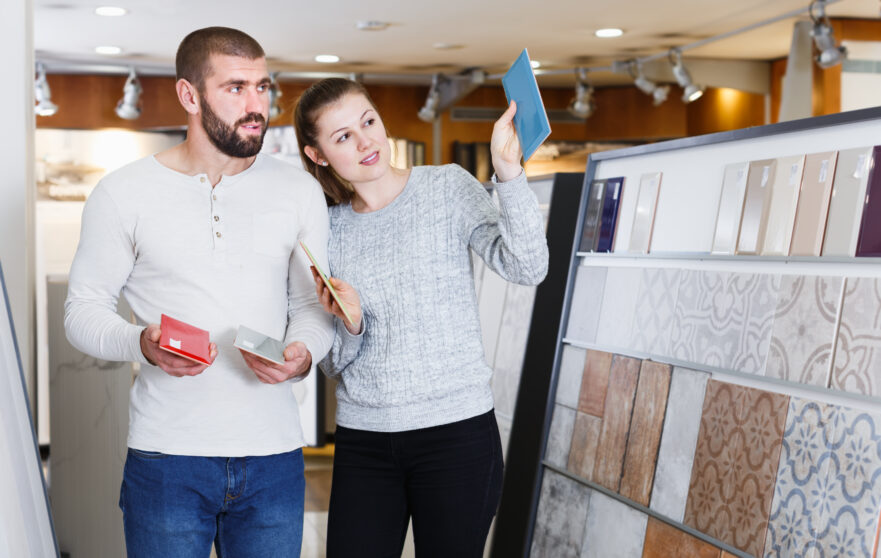Building a custom home may seem like a daunting process at first, but it also ensures you’ll have a home designed uniquely for you. As many a custom homeowner will tell you, the end result makes the process well worth it. But there are some important things to know before you start. We’ve put together 7 important custom homebuilding tips for you to keep in mind as you embark on creating a home you love.
Quick Takeaways
- Location is one of the few things you can’t change; do your research and choose the one you love.
- Life changes — plan your custom home for the future so you can grow into, not out of it.
- Stick with neutral and classic choices when it comes to permanent features to avoid your home becoming outdated.
- Build flexibility into your custom homebuilding plan for a less stressful experience.
- Take time to research and choose a home builder you truly trust.
6 Important Custom House Building Tips for Homeowners
Prioritize Location
Location, location, location! There’s a reason the mantra exists. Location is one of the only things you can’t change about your home. When you’re building a custom home, you have even more flexibility around the location because you’re already in total control of what your home will look like.
Get to know the neighborhoods in the areas where you’re looking, and spend time in each (here’s our neighborhood guide for Daytonians). Vetting your future neighborhood is one of the most important things you can do before building a custom home. Here are some ways to do it:
- Ask your real estate agent – Your agent should know about the neighborhoods you’re considering and can likely even connect you with people who already live there if you’re looking for more personal input.
- Attend community events – Community meetings, festivals, celebrations, and other community events are a great way to get to know your future neighbors.
- Talk to neighbors in the area – While you’re at events or in the area, talk to neighbors and get to know what their experience is like. There’s nothing like firsthand information.
- Visit neighborhood businesses – Eat at restaurants, shop at local stores, and research businesses you know you’ll utilize frequently (for instance, if you love going to the salon, look into salons in your neighborhood).
Have a Budget and a Schedule
Truthfully, creating a budget and schedule — and sticking to both — is one of the toughest parts of custom house building. There is a lot to consider when it comes to building your dream home, from fixtures and features to efficiency to labor costs and more. It can feel overwhelming without the right preparation, but by planning in advance you can alleviate much of the stress.
Here are some important budget considerations:
- Hard costs – There’s no getting around costs for land, materials, labor, permits, and other requirements for building your home. Account for those first and go from there.
- Soft costs – These are costs not directly related to construction that often have to be paid out of pocket. They can include taxes, fees, design costs, and more. Don’t be caught off guard by these costs.
- Must-haves vs. Nice-to-haves – Think about the things you absolutely won’t budge on, and be sure you’re financially set to cover those costs. Then, know your nice-to-haves and build them in as you can.
- Flexibility – More on this later, but don’t budget down to the penny. Leave yourself some wiggle room.
Here’s a deeper dive on building your custom home budget:
Custom Home Costs: How to Stay on Budget When Building a New Home (video)
Plan for the Future
Your current living situation may not be the same forever. Maybe you plan to grow your family, or your in-laws might move in someday, or you’re hoping to transition to working from home full time. Whatever your future plans might be, you should consider them while you build your custom home.
You don’t want to spend time, energy, and money on a custom home only to outgrow it later on. Planning your custom home for future possibilities ensures that it can grow with you.
Don’t Go Overboard
One of the best parts of building a custom home is making it uniquely your own. But selecting permanent features and fixtures that are overly trendy can create a home that will quickly become outdated. Instead, go with neutral and classic features that you can personalize with more changeable additions, like fabrics, paint, furniture, and other flexible interior design options.
Build-in Flexibility
It’s important to go into the custom homebuilding process with a flexible mindset. It’s unlikely that everything, or even most things, will go exactly according to plan. Unexpected costs, bad weather, and other surprise events can occur that delay the building process or create a less straightforward experience than you originally imagined.
Share this Post
